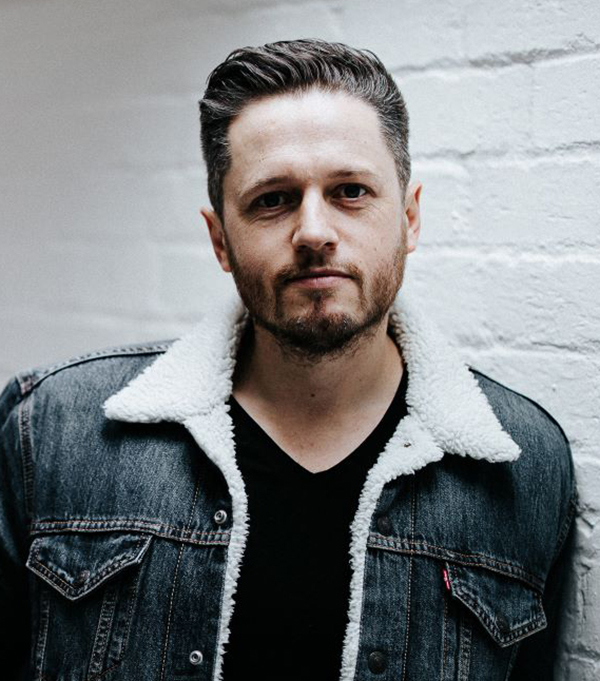- Client: Various
- Lead Contractor: Design Haus Architecture (lead designer)
- BIM Tools: HTC Vive, Unreal Engine
The use of virtual reality in building design is normally confined to big budget projects, but Design Haus Architecture has incorporated the technology into its design process for domestic-scale newbuild and extension projects to give clients a clearer understanding of spaces, dimensions and materials before a shovel hits the ground.
The Nottingham-based practice, set up by director James Brindley in 2018, has a dedicated VR suite where clients and designers can experience designs immersively wearing an HTC Vive headset plugged into a high-end PC. Motion sensors and handheld controllers enable them to navigate through photo-realistic environments rendered in the 3D games software Unreal Engine.
Projects that have benefited from the technology include Water in the Trees, a swimming pool building at a home in Nottingham with a lightweight “floating” roof and frameless glass walls and doors. VR was used on the project from design conception and throughout design to allow the client to see exactly how the space would feel from within.

One of my clients recently described VR as a test drive, not many people would buy a new car without test driving it first and a new home is such a huge investment it seems crazy not to want to try it out first.– James Brindley, Design Haus Architecture
City Heights is a timber clad extension to an existing property in Nottingham, where VR enabled the client to assess the various angles of the plot and select furniture. Meanwhile, the Den extension project in Keyworth saw VR used to assess the pitch and length of the roof canopy and the angles of timber roof supports to maximise the amount of daylight entering the property as well as demonstrate how light and shadows would impact on the building throughout the day.
VR removes a lot of guesswork from the design process for both architects and domestic clients, Brindley tells BIM+: “Rather than looking at a flat drawing on a piece of paper, clients can walk around inside the finished design and experience it at full scale, VR can show the impact of every decision through direct experience. For example, the ‘feeling’ that a space is too tall would never traditionally become clear until the builder has completed the structure on site.”
According to Brindley, greater transparency enabled by VR has resulted in fewer late stage design changes. “Previously, there may have been questions in the client’s head about, for example the location of a window or door, but using VR every question is answered because they have walked through the project and viewed it from every angle. Builders have also visited the studio to walk through projects and ask questions before starting on site.”
On a typical job, Design Haus first creates a 3D model using surveys of the existing building and surrounding land, which forms the basis for a 30% design solution that ticks the client’s main boxes in terms of spaces and style. This is imported into VR as a “white card model” to give the client a feel for the space to suggest any changes and materials.
“If they want to move a wall or a window I will do it then put them straight back into the model,” says Brindley. “We might discuss furniture layouts and add placeholders for basic items like sofas, tables or kitchen islands. But putting that into place and capturing the mood and feel of the space you give the client assurance that it’s the right thing to do.”
Unreal Engine boasts photoreal rendering, animation and physics to give unparallelled immersion, however Brindley points out that other architectural design packages offer better control of the sun, making it possible to track it by location and time of day or month.
As the design is evolved and refined, Brindley moves constantly between his desk and the VR suite to experience the impact of modifications. The technology allows clients to specify different materials within the scene to visualise how a design choice will change the look and feel of a room.
The experience can result in some unusual observations and insights. For example, when exploring the design for a home with a large roof terrace one client wanted to view it from the perspective of the neighbour’s balcony to check if they would be able to see him and his wife sunbathing. “It’s a funny story, but how could you actually test a scenario like that without using VR?” says Brindley.
Advancing tech should make the experience even more immersive. Design Haus plans to purchase a wireless HTC Pro headset to avoid the issue of the headset cable dragging across the client’s body, potentially snapping them out of the experience.
Experiments with 3D sound are already underway, for example on the swimming pool project the client wore headphones to hear the sound of lapping water that tracked to match his movement. Brindley is even working with smell, for example spraying the scent of coffee into the air to make people feel like they are in the kitchen.
“One of my clients recently described VR as a test drive, not many people would buy a new car without test driving it first and a new home is such a huge investment it seems crazy not to want to try it out first,” he concludes.
Top image: The Water in the Trees in Nottingham City Centre











